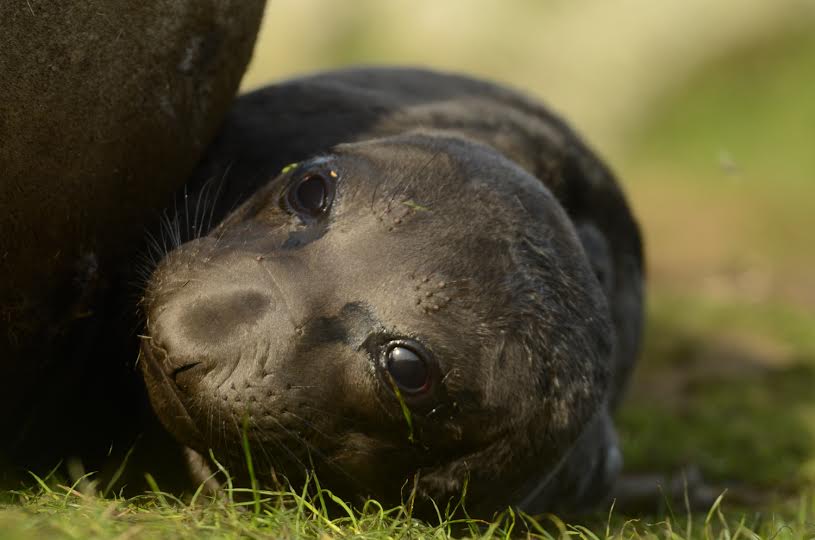In the early morning hours of January 14, a new elephant seal pup was born at the Race Rocks Ecological reserve. This was the 5th pup born to a female called Bertha since January 2009. Ecoguardian on the island Alex Fletcher reported that it was born in the night, some time before daylight.
The mother and pup can be seen from the remote-controlled camera 1..

Elephant Seal pup born January 14, 2014 at Race Rocks Ecological reserve. … Photos by Alexander Fletcher.
- A male( chunk) and female (Bertha) on the lawn with the pup.
- He was born on the night of January 14
- Pictures from January 15
- Was nursing today
All the elephant seal files I have been doing over the past dozen years are available in links from:
http://www.racerocks.ca/wp/2013/12/01/mirounga-angustirostris-taxonomy-and-image-file/
The first birth by Bertha was in 2009
http://www.racerocks.ca/wp/2009/01/30/first-elephant-seal-born-at-race-rocks/
that one survived but just.
In 2010 and 2011 the pups were killed by a very aggressive male called Misery… fortunately he did not show up this year. but he did breed with Bertha last year. So this is probably his pup.
http://www.racerocks.ca/wp/2007/01/15/biography-of-misery/
In 2012, a pup named Squall was born , she survived , see pages from the tag: http://www.racerocks.ca/wp/tag/squall/
She is identifiable by the crook in her right front flipper.
In 2013, Bertha returned in February and was bred at Race Rocks by “Misery”, but did not have a pup
Each year since 2009 there have also been several pups born out at Middle Rocks, just North of Great Race Rocks.. one was also born there last week but it also met the usual fate of being washed off by an Easterly that often hits at this time of year. Fortunately the main island , Great Race Rocks is high enough that it is protected from that.
http://www.racerocks.ca/wp/2009/02/03/11326/
The males can be very aggressive and the female has to do a job of fending him off. They are mainly interested in breeding so when the pup gets in the way it can be fatal. The pictures of the first pup born , Ninene show what she went through, and she barely survived.
Unfortunately the colony is not large enough to have a guardian male protect the herd of pups from other males as they do in the US.












